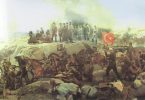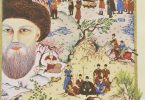Some wise sayings or epigraphs cannot be jogged in one’s mind as quickly as they are read. They come together with the most peculiar of words by those with great experiences and force us into deep thoughts. The first epigraph in my novel ‘The Cellist’, which explores the “deathly envy” and the modernisation of the Ottomans during the 19th century, begins with these wise words of the great author, Tanpınar. And with these which due humbly my own: “Musical notes are more sinful than words.” The epigraph in my first novel ‘The Clarinet Player’ belongs to a Russian novelist who has the same passion towards music, just as Tanpınar: Turgenyev states: “The rest can only be explained with a song”.
Yes, the art of novel had another neglected aspect and that was “music”. The resemblance of novels to real lives is due to, just like it is with music, the mutual features and rhythms. Some novels are like symphonies, some joyous or melodious folk songs, some are like gypsy songs or hejaz songs and some like arabesque music. In my opinion, they are mostly similar to jazz songs “even the instruments would not know where it begins and ends”.
MUSIC IS LIKE A PRAYER
In Tanpınar’s opinion, music is also like “an objectless art” without any relations to the external world. Tanpınar writes the following in the Dergah magazine: “Music is a garbed time. It is substanceless and made up from sound. In other words, from the most rudimentary sign of excitements. It is constantly in the becoming just like time itself. Thus, it is born, grows and disappears from itself”. He then continues his writing with Beethoven´s words of “Musical notes are the breath of God” and finalises it with “Music is like a prayer”.
As an artist, who loves pictures and takes delight from using all aspects of a picture within his novels, he searches for the landscape of the old Istanbul within the compositions and music of Ebubekir Ağa, Selim III and Dede Efendi. Although the landscapes he finds are not as distinctive as those of Antoine Ignace Melling, there is a possibility that Tanpınar would feed his imagination with music. We understand this from the following writing he wrote in 1977: “When I had listened to the Mahur composition of Dede for the first time, what appeared before my eyes was a great tree overlooking a bare scenerey on its own. This imagination was something born within me with the winds of the music, although there was absolutely nothing within the lyrics to awaken such an image… Everyone knows that Ottoman style music does not take the external world as its source of inspiration”.
When we read novels, surely thousands of scenes built with the help of words come to life before our eyes. Yet, let us not forget that a song from within us flows too. Sometimes we find ourselves within a suzinak peshrev style song, sometimes in a mourning arabesque song and sometimes within a symphony. And sometimes within a jazz song which we would not know how it ends…









Leave a Comment